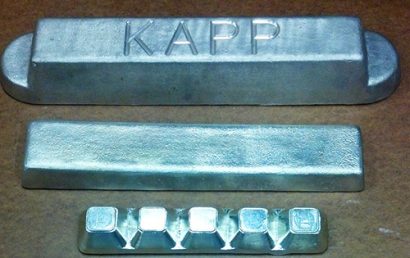Material Spotlight: Chromium Carbide
Long before there were complicated mega-machines, there were coatings. In fact, the process of coating dates back to Cro-Magnon man. Of course, not all coatings were protective or preventative. During the Renaissance and beyond, coatings had more of a decorative value. But post-Industrial Revolution, coating’s protective functions were fully realized. There are many different methods of application as well as numerous kinds of chemical coatings today.
What method and what chemical or chemicals will be used is largely dependent upon the makeup of the piece that they are being applied to (what is it made of, what is its function, what are the conditions under which it will be used, etc.). Today’s protective coatings can discourage everything from abrasion to corrosion, to electrical conduction, to moisture, and beyond – and one good example of this is Chromium carbide.
Chromium Carbide as a Material
Chromium carbide has a number of uses and benefits, possibly the most significant of which is for use in environments where high temperatures are present. It provides excellent wear resistance. Depending on operating conditions, rather than using tungsten carbide, chromium carbide can be the perfect alternative.
But because (compared to tungsten carbide) chromium carbide alone exhibits less wear resistance, it can be combined with a chemistry involving a nickel chrome binder in order to increase resistance to heat. This combination also performs well under oxidizing or corrosive conditions and exhibits high-temperature oxide resistance characteristics.
Taking things a step further and combining chromium carbide with a nichrome alloy derived metal alloy matrix gives it an exceptional resistance to corrosion. So protective are chromium carbide coatings that they are appropriate for use under heat conditions which range from the following: approximately 540 Celsius to 815 Celsius or 1000°F to 1500°F. These coatings are recommended where resistance is needed for use in applications involving particle erosion, fretting, hard surfaces, and abrasion.
Coating, Preparation, and Finish of Chromium Carbide
Chromium carbide can be applied through a HVOF process and is applied in a thin coat of fewer than .025 inches. This coating self-bonds to titanium and mild steel. These surfaces must be cleansed in order to remove oxides from the surface before the application will self-bond. After most applications, because of its fine sprayed texture, no subsequent finishing is necessary. When it is, however, through the use of specific procedures, an exquisite finish can be accomplished.
Applications of Chromium Carbide
Chromium carbide coatings are perfect for providing wear resistant due to high-temperature applications which encourage particle erosion, and for wear by cavitation, fretting, and abrasion. This protective coating is used in high-temperature atmospheres for the production of steel because it resists oxide pickup. During high-temperature annealing, shapes like steel strip come into direct contact with components. Thanks to this coating, those components are protected from damage.
Chromium carbide is the ideal solution to wear resistance and has been tested under the most demanding, extended conditions. In addition to wear resistance, this coating has exhibited favorable properties in situations where the coated piece ends up being exposed to conditions that move particles that are solid in gasses that are erosive by coating the fan and ductwork surfaces. If you would like a further explanation of how this amazing protective coating can help you and your company, talk to us today.




